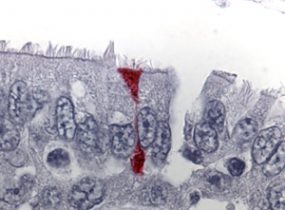Investigation of severe acute respiratory syndrome (SARS)
2003
In 2003, thousands of people, mostly in Southeast Asia, became ill with an unknown respiratory illness. When the outbreak began, the cause was unknown. The illness quickly spread, with health care workers and family members of sick patients also becoming ill. The outbreak spread to multiple countries, including a number of cases in the US, Canada, and several countries in Europe.
Symptoms included high fever, chills, and sore throat followed by shortness of breath and cough.
As the number of SARS deaths grew, autopsy tissue specimens were sent to IDPB to examine. Using a wide array of tests, and collaborating with many other groups at CDC, IDPB was able to describe the cause of SARS as a newly-identified coronavirus.
The identification of the SARS-associated coronavirus will help scientists to better understand and respond to similar outbreaks in the future.
For more information, visit CDC’s severe acute respiratory syndrome (SARS) site.

This is a photomicrograph of an immunohistochemical stain of respiratory tissue from a patient infected with SARS coronavirus, the causative agent of severe acute respiratory syndrome (SARS). The red staining represents the virus proteins.
